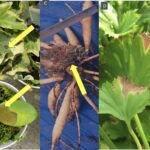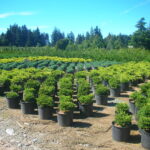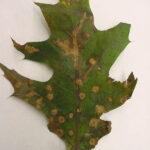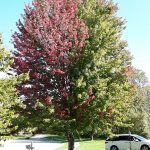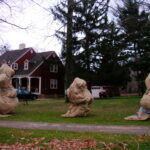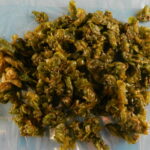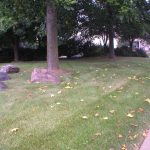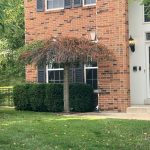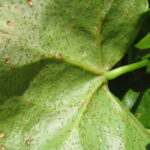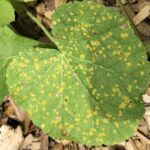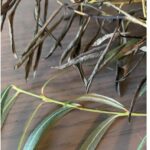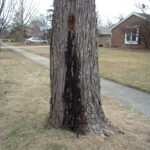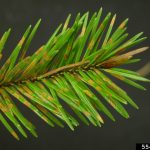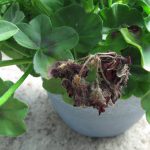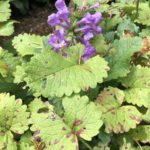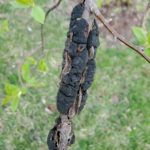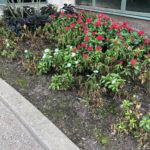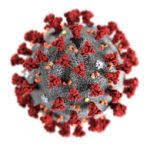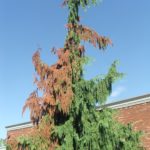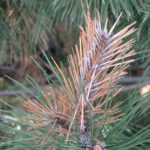Resources for landscapes and gardens in the Midwest
Plant Diseases
For many of us, pest management is never far from our mind. This may be because the pests we manage are always there, and even if we can’t see them, we know that they haven’t disappeared completely. For this reason, it is important to take a time-out and think about how to improve your management,[Read More…]
Tubakia leaf spot, caused by the fungus Tubakia, is the disease we find more commonly on oak than any other. Throughout the world, there are 11 species of Tubakia known to infect oak, with Tubakia dryina (previously known as Actinopelte dryina) being the most commonly encountered species in our landscapes. Apple, ash, black gum, chestnut,[Read More…]
We often think of Phytophthora as mainly a root rot pathogen, but Phytophthora can also cause a bleeding trunk canker under the right conditions. The most commonly attacked trees we see in the diagnostic lab are American and European beech (Fagus spp.), and maples (Acer spp.); but this disease is also reported to occur on[Read More…]
As the 2020 gardening year draws to a close, now is the time to ensure a successful gardening season next year, for you or your customers! Sanitation is a cornerstone of integrated pest management and is essential for good plant health management. Throughout the year, we have been plagued with both unusually wet and unusually[Read More…]
This very slimy substance (Fig. 1) has many common names, was once classified as an algae but is now known as a Cyanobacterium. It is worse in areas that are frequently wet, such as low areas in lawns or on frequently irrigated golf courses (Fig. 2) or along walkways in nurseries where it can create[Read More…]
Do you have a tulip poplar (Liriodendron tulipifera) in your yard and does it look like fall has come early? This is a likely occurrence in the landscape in late summer, especially leading into August. About this time of year leaves on many tulip poplar trees will start to gradually turn yellow before they fall[Read More…]
This spring the PPDL received several samples, calls and emails related to dying weeping cherry trees (Fig. 1, 2, 3). Reports of this phenomenon came from as far away as Missouri. Ornamental cherry trees (and related Prunus spp.) are susceptible to multiple problems, including southwest injury (Fig. 4) Botryosphaeria dieback/canker (Fig. 5), bacterial canker and[Read More…]
Plants that experience extremes in soil moisture may develop spots on their leaves, called “oedema” (also spelled “edema”). The spots may first appear as a blister or raised spot, particularly on the undersides of leaves, but may occur on the top side as well as on the stems. Eventually, the blister develops a rust-colored, cork-like[Read More…]
Hollyhock (Alcea spp.), an anchor plant for the back of the cottage garden, bloom mid-summer with numerous flowers on tall spikes, providing beauty for us, and food for bees, hummingbirds and butterflies. The most common varieties are biennial, taking two years to complete their lifecycle, although some persist as short-lived perennials. Fortunately, they are prolific[Read More…]
Willows (Salix spp.) can be beautiful additions to the landscape. These iconic trees can be found growing naturally in river bottoms, along ponds, rivers, and streams; all areas with consistently moist soil. In the landscape, where soil moisture is much more variable, willows can be stressed by drought, increasing damage from a number of canker[Read More…]
Slime flux (also known as wet wood) is a dark, foul-smelling and unsightly seepage of sap from tree trunks (fig. 1). The disease is not usually a serious problem but the appearance can be alarming. Slime flux is caused by common surface-inhabiting bacteria or yeast fungi that enter the trunk through wounds associated with improper[Read More…]
Many are familiar with Rhizosphaera needlecast of spruce. If you aren’t, please see these two articles by Janna Beckerman and Megan Haas for more information about the disease and it’s management on spruce. The common name for the disease, needlecast, describes the ultimate fate of the needles: they are cast off. Loss of leaves or[Read More…]
Gray mold (causal agent = Botrytis cinerea) is one of the most common diseases affecting bedding plants. Host commonly include (but are not limited to): begonia, carnation, chrysanthemum, cyclamen, geranium, impatiens, marigold, million bells, petunia, vinca and zinnia. Fortunately, gray mold is one of the easiest diseases to manage. By changing cultural conditions that are[Read More…]
Earthworms are not the only wigglers in the soil beneath your feet. Nematodes, microscopic roundworms, can be found in soil across the globe (even Antarctica!) and are often a barometer of soil and environmental health. However, the nematodes we encounter more frequently feed on plants and cause us, as plant stock producers and consumers, a[Read More…]
Black knot, caused by the fungus Apiosporina morbosa, is a recurring problem on Prunus species. Most Indiana fruit growers, both professional and amateur, have at one time or another observed the black, knot-like warty growths (Fig. 1) that often occur on the woody parts of plum and cherry trees. This fungal disease is one of[Read More…]
Plant pathology is the study of plant diseases. In my career, I’ve studied or witnessed the plant disease epidemics of chestnut blight, Dutch elm disease, sudden oak death, soybean rust, and many more. I am not comparing these to the current pandemic of Covid-19. It doesn’t compare. Please understand this is just an opportunity for[Read More…]
This Nootka falsecypress (Chamaecyparis nootkatensis) is showing severe dieback throughout much of the tree (fig. 1 and 2). The primary pathogen present is a fungus in the genus Diplodia. Small twigs are infected first, which eventually leads to dieback of larger branches (fig. 3). Note the spherical black spore bearing structures (pycnidia) at the base[Read More…]
The dead lower branches in these Austrian pines (Fig. 1) are due to Diplodia (= Sphaeropsis) tip blight. The causal fungus infects newly elongating shoots, in late spring, resulting in stunting and death of the new growth (Fig. 2). Black spore-bearing structures of the causal fungus are formed at the base of the stunted brown[Read More…]
Sign-up to receive email news and alerts from Purdue Landscape Working Group:
